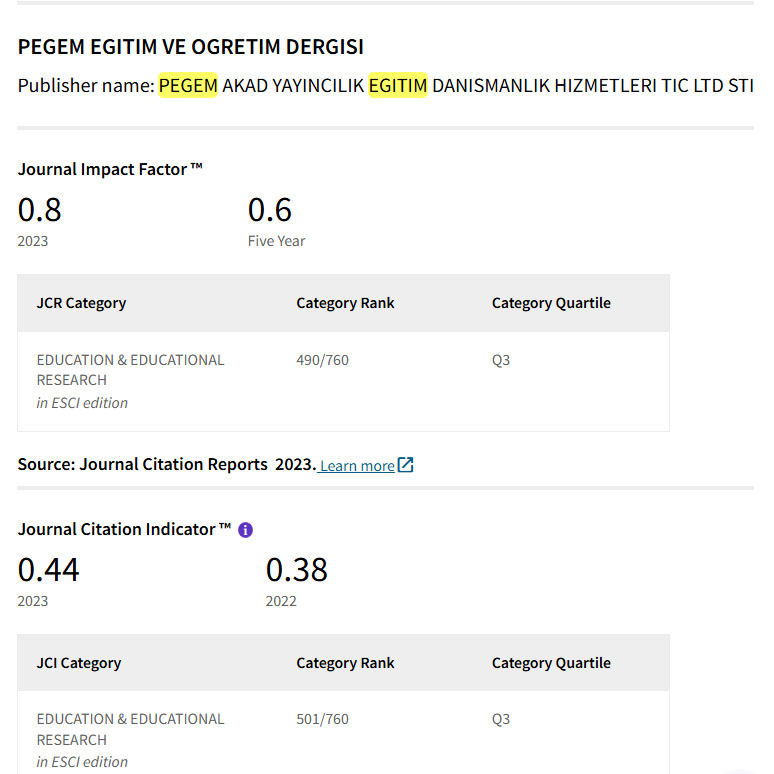A few ways of memorizing intermediate Japanese grammar for students majoring in Japanese language
DOI:
https://doi.org/10.47750/pegegog.12.01.03Keywords:
FPT University, Memory, Intermediate grammar, , Japanese, StudentsAbstract
Grammar is one of the important parts in the pursuit of Japanese language by all Japanese language students in particular and those who have a passion for Japanese in general. Grammar is always necessary when creating a complete sentence to be able to communicate and communicate with the opponent. However, especially at the intermediate level of Japanese, many students will find it confusing and difficult to understand and remember for a long time. Therefore, this article is completed based on survey results from 26 students of FPT University in Ho Chi Minh City. The article uses analytical and qualitative methods to find appropriate and effective methods of memorizing intermediate Japanese grammar in the learning process. Through the survey results, it shows that FPT University students have many methods of memorization through various forms such as books and newspapers, application to daily communication and practice. These methods are all effective for improving the Japanese grammar learning process of Japanese language students at FPT University.
Downloads
References
Sato, M. (2019). Exploring EFL Learners’ Attitudes towards Topic-based Lexical Network and Form-based Grammatical Network Activities. The Asian EFL Journal, 53-71.
Fotos, T. S. (2005). Traditional and grammar translation methods for second language teaching. In Handbook of research in second language teaching and learning (pp. 677-694). Routledge.
Loewen, S., Li, S., Fei, F., Thompson, A., Nakatsukasa, K., Ahn, S., & Chen, X. (2009). Second language learners' beliefs about grammar instruction and error correction. The Modern Language Journal, 93(1), 91-104.
Lundqvist, J., & Sandström, M. (2019). A bioecological content analysis: an analysis technique rooted in the bioecological model for human development. International Journal of Early Childhood Special Education, 11(2), 194-206.
Candidates, T. (2021). Related Knowledge Levels of Speech Language Therapist Candidates. International Journal of Early Childhood, 13(1), 54-61.
Aqel, I. M. (2013). The effect of using grammar-translation method on acquiring English as a foreign language. International Journal of Asian Social Science, 3(12), 2469-2476.
Benati, A. (2018). Grammar‐Translation Method. The TESOL Encyclopedia of English Language Teaching, 1-5.
前田直子. (2007). 中級・上級の日本語文法教育. 研究年報/学習院大学文学部, (53), 71-9
小林由子. (2019). 2. 課題遂行型授業における語彙・文法学習の位置づけ: 中級理解 (基礎) 3A の実践から. 日本語・国際教育研究紀要, 22, 28-45.
野呂智哉, 橋本泰一, 徳永健伸, & 田中穂積. (2005). 大規模日本語文法の開発. 自然言語処理, 12(1), 3-32.
Uchimaru, Y. (2012). 中級日本語学習者が望む学習とは何か-高等教育機関におけるアンケート調査. 大学教育研究紀要, 8, 61-72.
小野正樹. (2005). 日本語教師の 「上級文法」 のとらえ方―中国語母語話者教師と日本語母語話者教師へのアンケート調査から―. 日本語教育方法研究会誌, 12(2), 4-5.
Downloads
Published
How to Cite
Issue
Section
License
Copyright (c) 2021 Pegem Journal of Education and Instruction

This work is licensed under a Creative Commons Attribution-NonCommercial 4.0 International License.
Attribution — You must give appropriate credit, provide a link to the license, and indicate if changes were made. You may do so in any reasonable manner, but not in any way that suggests the licensor endorses you or your use.
NonCommercial — You may not use the material for commercial purposes.
No additional restrictions — You may not apply legal terms or technological measures that legally restrict others from doing anything the license permits.




